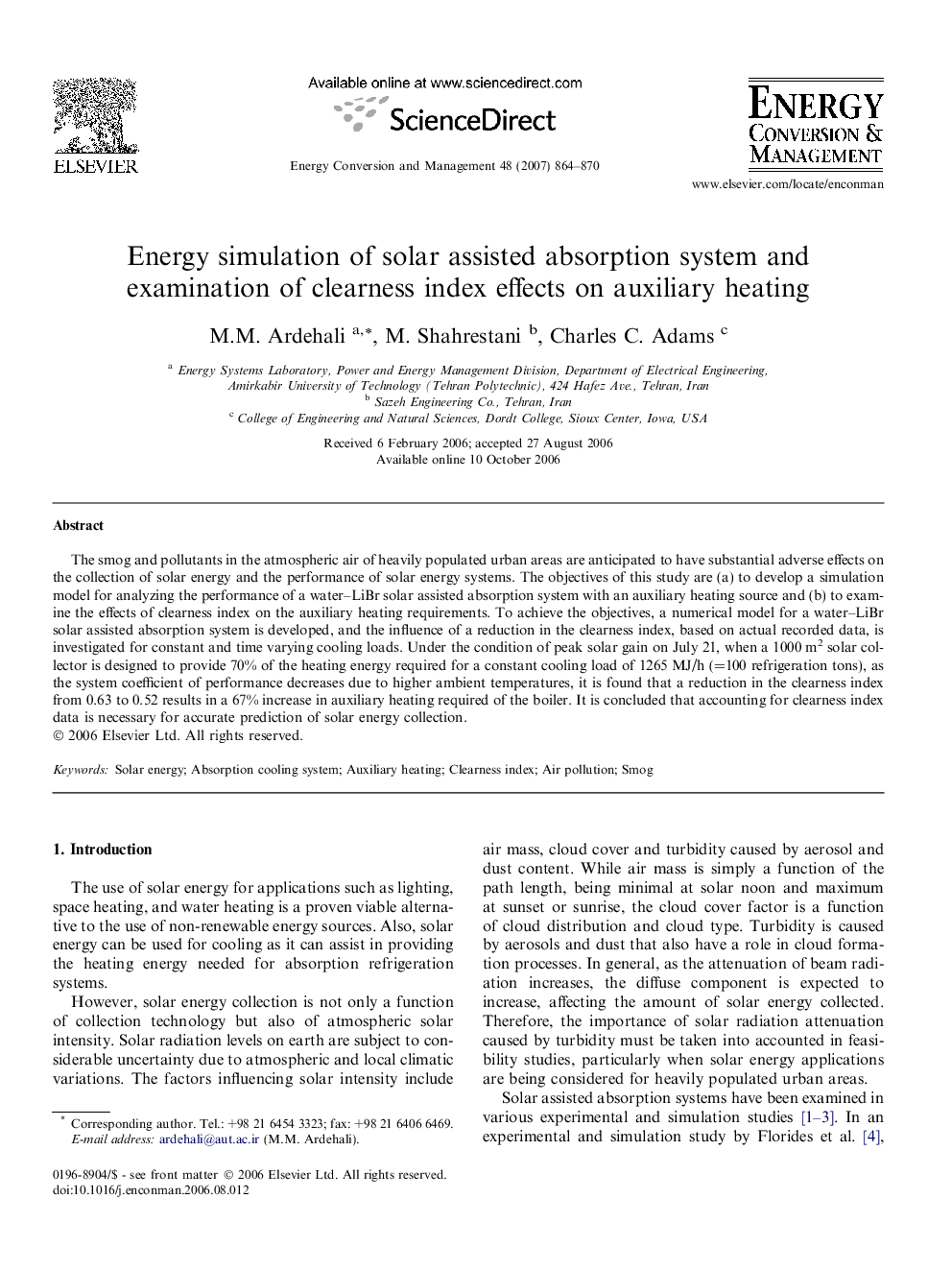| Article ID | Journal | Published Year | Pages | File Type |
|---|---|---|---|---|
| 766553 | Energy Conversion and Management | 2007 | 7 Pages |
The smog and pollutants in the atmospheric air of heavily populated urban areas are anticipated to have substantial adverse effects on the collection of solar energy and the performance of solar energy systems. The objectives of this study are (a) to develop a simulation model for analyzing the performance of a water–LiBr solar assisted absorption system with an auxiliary heating source and (b) to examine the effects of clearness index on the auxiliary heating requirements. To achieve the objectives, a numerical model for a water–LiBr solar assisted absorption system is developed, and the influence of a reduction in the clearness index, based on actual recorded data, is investigated for constant and time varying cooling loads. Under the condition of peak solar gain on July 21, when a 1000 m2 solar collector is designed to provide 70% of the heating energy required for a constant cooling load of 1265 MJ/h (=100 refrigeration tons), as the system coefficient of performance decreases due to higher ambient temperatures, it is found that a reduction in the clearness index from 0.63 to 0.52 results in a 67% increase in auxiliary heating required of the boiler. It is concluded that accounting for clearness index data is necessary for accurate prediction of solar energy collection.
